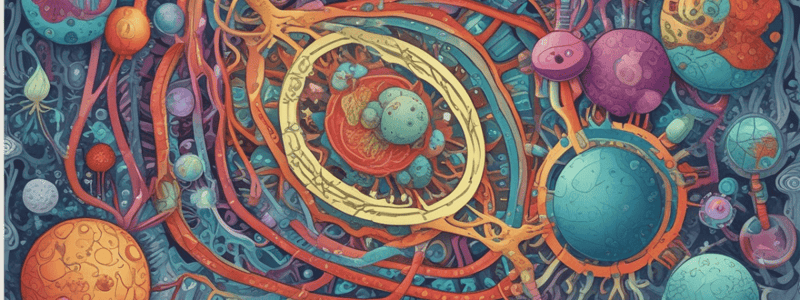Podcast
Questions and Answers
Which of the following is NOT a possible form of viral genetic material?
Which of the following is NOT a possible form of viral genetic material?
- Double-stranded RNA (dsRNA)
- Double-stranded protein (dsProtein) (correct)
- Single-stranded DNA (ssDNA)
- Double-stranded DNA (dsDNA)
Positive-sense single-stranded RNA (+ssRNA) in viruses is most similar to which of the following?
Positive-sense single-stranded RNA (+ssRNA) in viruses is most similar to which of the following?
- tRNA
- mRNA (correct)
- rRNA
- dsDNA
What type of genetic material allows a virus to directly transcribe a message?
What type of genetic material allows a virus to directly transcribe a message?
- Single-stranded DNA (ssDNA)
- Positive-sense single-stranded RNA (+ssRNA) (correct)
- Negative-sense single-stranded RNA (-ssRNA)
- Double-stranded DNA (dsDNA)
Which of the following is a characteristic of negative-sense single-stranded RNA (-ssRNA)?
Which of the following is a characteristic of negative-sense single-stranded RNA (-ssRNA)?
What is required for a cell containing -ssRNA to produce proteins?
What is required for a cell containing -ssRNA to produce proteins?
Flashcards are hidden until you start studying
Study Notes
Virus Structure
- Unlike cells, viruses have diverse genome structures, including double-stranded DNA (dsDNA), single-stranded DNA (ssDNA), double-stranded RNA (dsRNA), and single-stranded RNA (ssRNA).
- There are four types of viral genome structures: dsDNA, ssDNA, dsRNA, and ssRNA.
- Single-stranded RNA (ssRNA) viruses can be further classified into two categories: positive-sense (+ssRNA) and negative-sense (-ssRNA).
- Positive-sense (+ssRNA) viruses have a genome that can be directly translated into protein, similar to mRNA.
- Negative-sense (-ssRNA) viruses have a genome that must be transcribed into a complementary positive-sense RNA before it can be translated into protein.
Studying That Suits You
Use AI to generate personalized quizzes and flashcards to suit your learning preferences.




